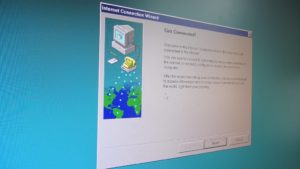US "digital divide": how internet access disparities affect resilience
The benefits of home internet access are countless. Having an internet connection allows families and individuals to engage in the economy, gain access to information which can improve quality of life, stay informed of news, and connect with others. While mainstream internet use has come to influence almost every facet of life in the United States and across the globe, not all communities have been exposed to its resources at the same rates.

According to 2015 US Census Bureau data, 73% of US homes had home-internet access. However, examined by demographic groups, rates of home-internet accessibility show significant disparities based on economic status and race. Just less than half of households with annual family incomes less than $20,000 have home-internet access. Further, 83% of Asians and 81% of Whites have home-internet access, compared to 72% of American Indian/Alaska Natives, 70% of Hispanics, 68% of Blacks. Largely a product of America’s overall racial wealth gap, the “digital divide” is a term that has come to describe the racial and economic disparities seen in internet access for Americans. Basic internet access and efficient internet speed are salient factors in a person’s ability to utilize resources effectively. Lack of broadband high speed internet availability has been found to negatively impact a community’s “economic well-being,” based on measures like growth of business, jobs and population. A recent study found that counties which have large African American and Native American populations tend to have lower access to high speed broadband connection, while the opposite tends to be true for counties with substantial White populations.
The digital divide affects the resilience of American society in a multitude of ways, including the intersection of social cohesion and economic opportunity. Gaps in the availability of such a crucial and impactful resource will further increase existing inequities in already vulnerable neighborhoods and counties. Clear differences in access to opportunity can build upon pre-existing stigma and create a cycle of distrust and economic stagnation. Beyond this, the ability of portions and the whole of society to return to normalcy after a disaster or disruption is increased with access to internet. With access, Americans gain resources to aid in recovery from events like natural disasters, or economic disruptions like job loss or the closure of a vital store. Combined with other factors like income equality and access to healthcare, internet access is pivotal in community resilience, and as a consequence, individual resilience. At home internet access and speed is not only essential to keep up with many aspects of modern society, and it is crucial in bolstering resilience of individuals, families, communities, broader social networks and overall cohesion.
Sources and Further Reading
The Racial Equality and Economic Opportunity Case for Expanding Broadband– Third Way
Digital Denied: The Impact of Systemic Racial Discrimination on Home-Internet Adoption – freepress
The Digital Divide: Percentage of Households by Broadband Internet Subscription, Computer Type, Race and Hispanic Origin – The United States Census Bureau
The Digital Divide and the Racial Wealth Gap: Why Supporting Minority Business Enterprise is an Answer for Both – The Huffington Post
Race and the digital divide: Why broadband access is more than an urban vs rural issue – The Hill
How does social support enhance resilience in the trauma-exposed individual? – Ecology and Society
